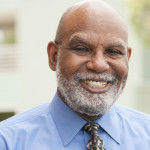A Departing Chancellor Reflects on the Past
By Emily Rogan
January 4, 2016
A Q&A with Rufus Glasper of Arizona’s Maricopa County Community College District
 After almost 30 years with the Maricopa County Community College District, in Arizona, with 13 of those years as chancellor, Rufus Glasper will be leaving his post in February to become president and CEO of the League for Innovation in the Community College.
After almost 30 years with the Maricopa County Community College District, in Arizona, with 13 of those years as chancellor, Rufus Glasper will be leaving his post in February to become president and CEO of the League for Innovation in the Community College.
During his time at the helm of one of the nation’s largest community college systems, Glasper was involved in a $950 million bond referendum, saw the system reach an all-time high enrollment of 275,000 students, helped create a corporate college for businesses and developed better articulation agreements with four-year state institutions, among other accomplishments. Prior to becoming chancellor, Glasper served as director of finance, chief financial officer and vice chancellor.
Describing his tenure as “invigorating,” Glasper shared his thoughts with the 21st-Century Center.
Why are you stepping down?
I’ve been on the board of the League for 29 years, and when the current president [Gerardo de los Santos] approached the board about needing to support his family because of medical concerns, some felt I was the appropriate person to take his place. It wasn’t on my radar, but it seemed like a good idea to transition now, to look at the innovation [at Maricopa] and to catalyze that at multiple colleges across the nation.
I will be leaving the institution — even with no state aid and no property tax or tuition increases — with the system maintaining AAA bond rating with [Standard & Poor’s, Moody’s and Fitch Group].
I’m feeling good about it, and the timing is good now; the system is involved in major initiatives such as ONE Maricopa, which is breaking down the silos between colleges and operating as one efficient system.
What’s your proudest achievement?
It’s been establishing financial stability that allows us to be innovative and not have to react to state cuts or periodic increases in taxes and tuition. It’s been challenging, but we never had to panic. We could take our time and make thoughtful decisions so we didn’t have to compromise quality.
Our employees have collectively helped us keep moving the needle during the recession and up until today, and that’s been one of the things I’m most proud of.
What was your greatest challenge?
The biggest challenge has been institutional governance. Since 2009, we have had some board members who ran on platforms of wanting to run the system or believing they know how to manage it better. The challenge is trying to get them to understand what our colleges are doing, the role we play in the community and what our mission is.
What do you hope for Maricopa going forward?
I hope that I have instilled in them an understanding of the vision called ONE Maricopa, so that they see it for the possibilities of what it can be. It’s not taking away individual identities, but improving consistency of how we operate toward student success and to be a more efficient system.
What are your thoughts about the role of community colleges today?
During the recession, we were able to have people come back and get reeducated. Today the majority of our students are not going to the university, but they can go through technical and community college and earn a livable wage to support their families. Low- and middle-income people are losing their way in the workplace because of affordability. If more were taking advantage of community college, the ROI would increase economic impact on the state and the nation.
If you could wave your magic wand, what would you do?
I would like to be able to implement President Obama’s request to operationalize his notion of free community college.






